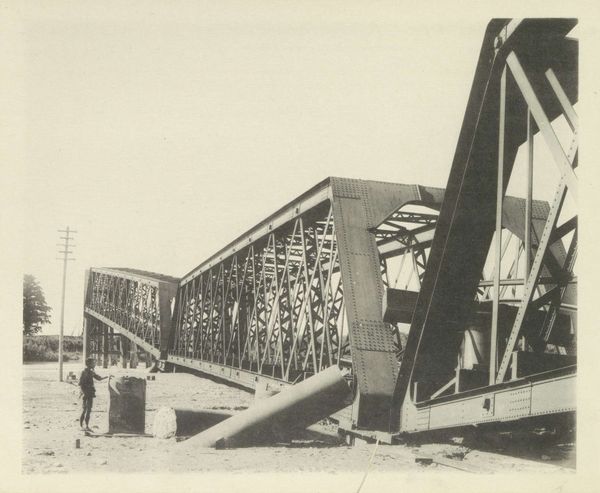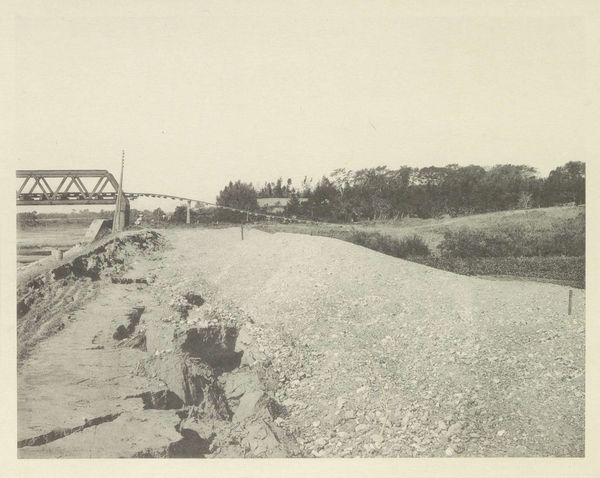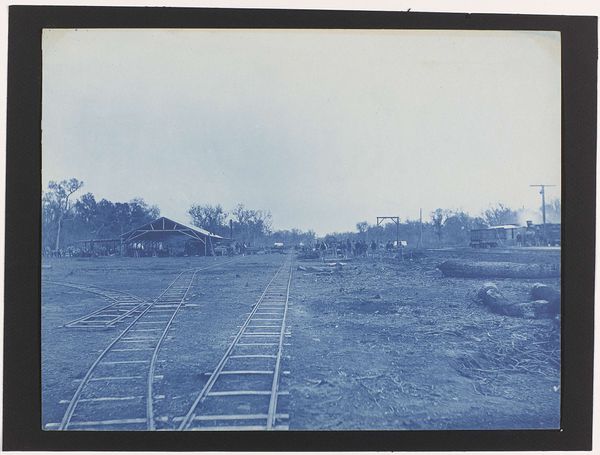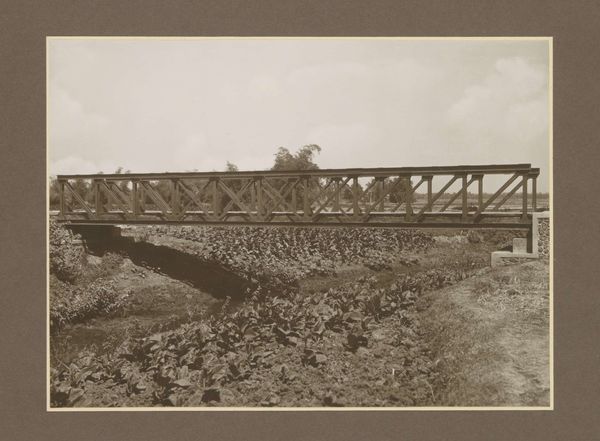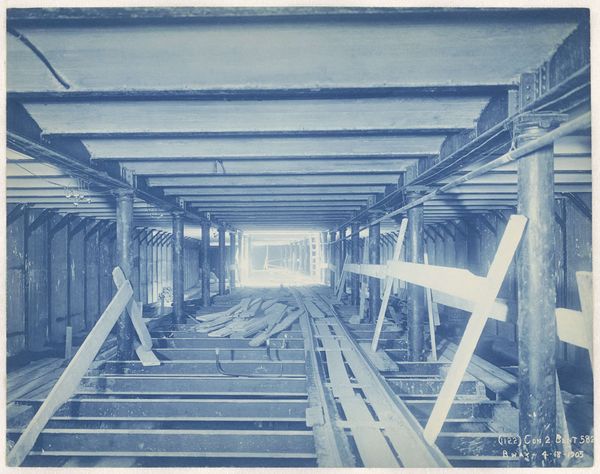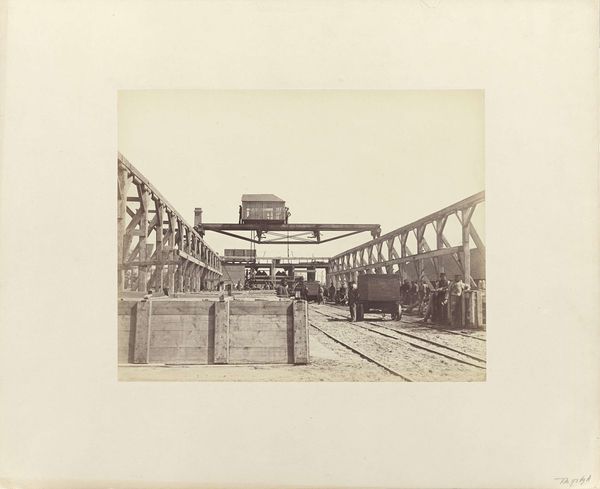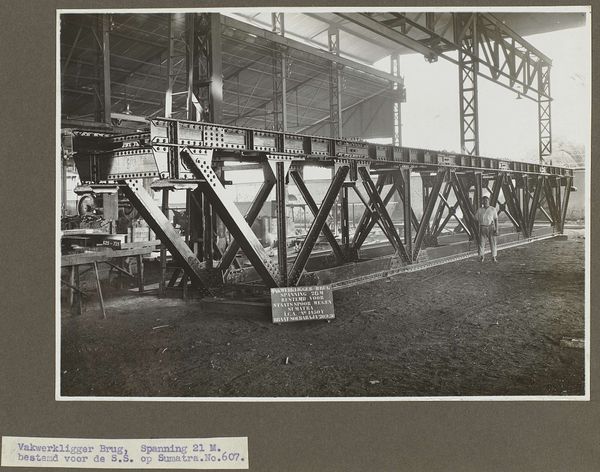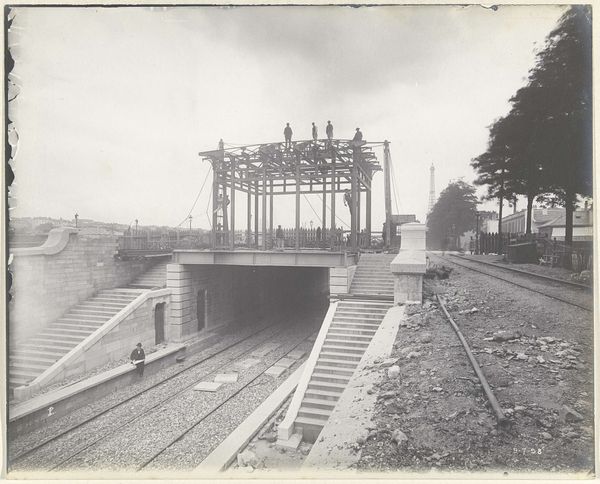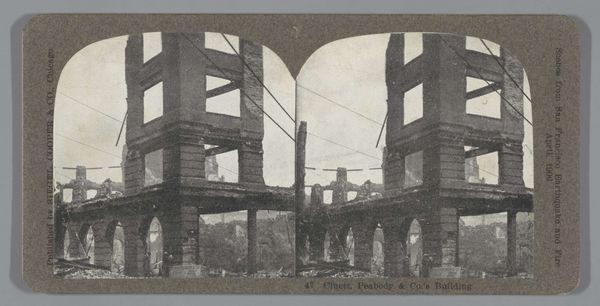
Arbeiders op de bouwplaats tijdens de aanleg van de metro in Parijs Possibly 1899
0:00
0:00
photography, gelatin-silver-print
#
landscape
#
outdoor photograph
#
outdoor photo
#
archive photography
#
photography
#
constructionism
#
gelatin-silver-print
#
cityscape
#
realism
Dimensions: height 297 mm, width 241 mm
Copyright: Rijks Museum: Open Domain
Editor: Here we have a photograph titled "Arbeiders op de bouwplaats tijdens de aanleg van de metro in Parijs," which translates to "Workers at the construction site during the construction of the metro in Paris," likely taken around 1899 by Emmanuel L. Pottier. The black and white gelatin-silver print feels very immediate; it's almost like stepping back in time. What catches your eye in this image? Curator: The photograph functions as a potent symbol of modernity’s advance. Beyond the literal depiction of the Paris Metro’s construction, the photograph embodies a powerful transformation of urban life. Notice the crane and the workers as symbols of progress, and how their combined work transforms the earth. What do the horizontal layers tell you about the society’s vision for the future? Editor: I see how the layers – the ground, the tracks, the bridge above – suggest a stratified society building towards something new. I hadn't thought about the crane as a symbol of anything beyond… well, construction! Curator: The crane isn't just lifting materials; it's lifting society's aspirations. It speaks to the collective belief in technology’s ability to elevate and connect. This belief became incredibly significant as this subway plan altered modern society. Editor: It’s amazing how much is packed into a simple black and white image. I'll never look at construction the same way again. Curator: Indeed. Each component represents both its historical moment and timeless symbolism, prompting questions regarding society's collective memory. It challenges how progress, technology, and human ambition affect not just landscape, but the human condition itself.
Comments
No comments
Be the first to comment and join the conversation on the ultimate creative platform.
